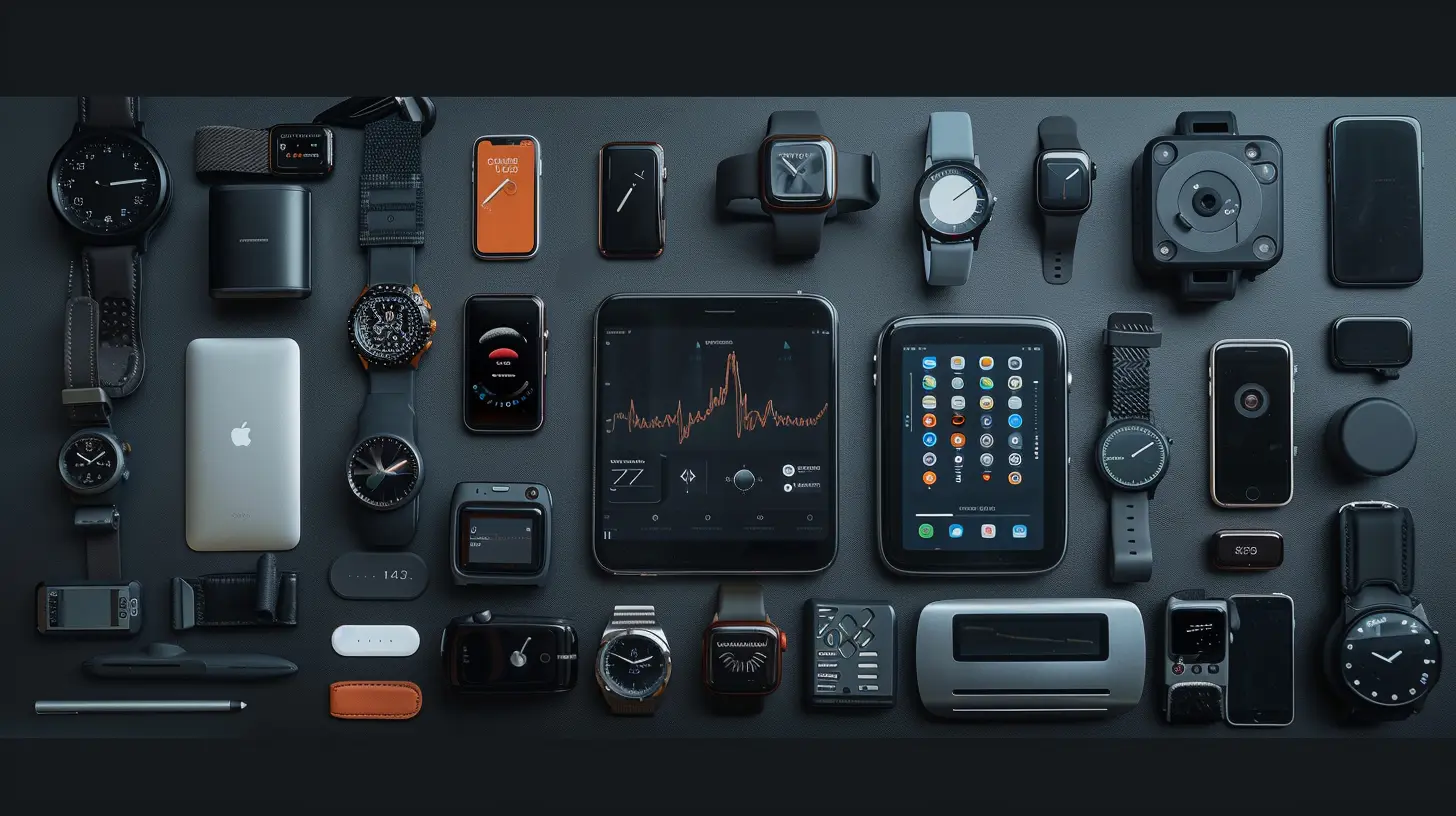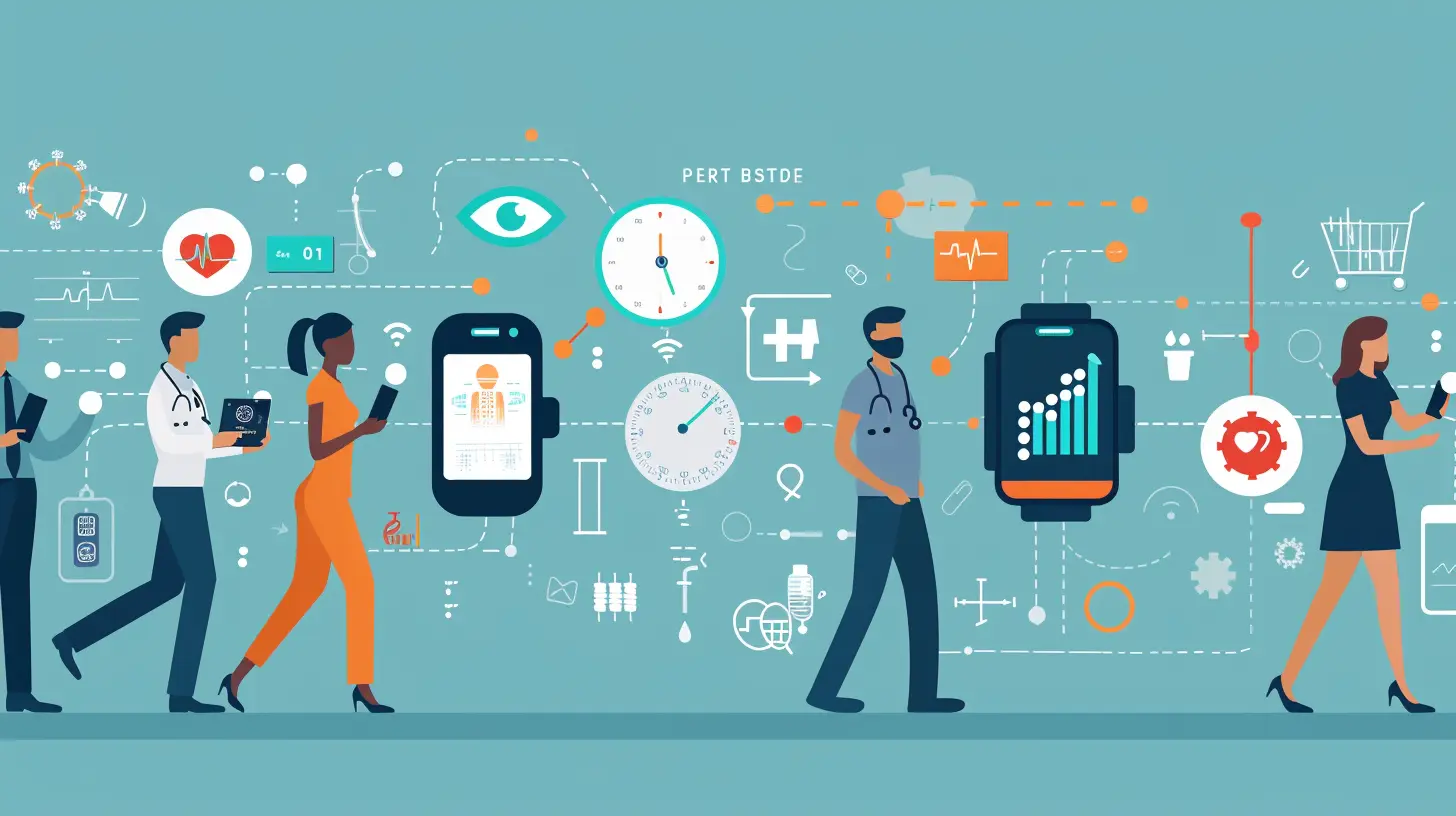How Wearable Tech is Changing the Way We Manage Chronic Conditions
17 August 2025
Wearable technology isn’t just about counting steps or monitoring your heart rate anymore. It has evolved into something far more impactful, especially when it comes to managing chronic conditions. If you or someone you know suffers from a long-term illness, you know how challenging it can be to keep track of symptoms, medications, and doctor's visits. But what if I told you that the tiny gadget on your wrist could help make all of that a little easier? Well, believe it or not, wearable tech is doing just that, and it's changing lives in ways we couldn't have imagined a few years ago.
From diabetes to heart disease, and even mental health issues, these wearables are stepping up to the plate in a big way. So, let’s dive in and explore how wearable tech is revolutionizing chronic condition management, one beep, buzz, and alert at a time.

What Exactly Is Wearable Tech?
Before we jump into the specifics, let’s define what we mean by wearable tech. Simply put, wearable technology refers to electronic devices that can be worn on the body, usually in the form of accessories like watches, wristbands, or even clothing. These devices often have sensors that track various health metrics such as heart rate, activity levels, sleep patterns, and more.Think Fitbit, Apple Watch, or even those glucose monitors some diabetics wear. They’re all examples of wearable tech, and they’ve come a long way from just being fitness trackers.

The Growing Epidemic of Chronic Conditions
Chronic conditions like heart disease, diabetes, arthritis, and asthma are on the rise. According to the World Health Organization (WHO), chronic diseases are the leading cause of death and disability worldwide. And here’s the kicker: many of these conditions require constant monitoring to prevent complications.For example, if you're diabetic, keeping tabs on your blood sugar levels is crucial. If you have heart disease, knowing when your heart rate spikes can be a lifesaver. Managing these conditions often feels like juggling a dozen balls at once. This is where wearable tech steps in to save the day.

How Wearable Tech Is Helping with Chronic Conditions
1. Continuous Monitoring for Better Control
One of the biggest advantages of wearable tech is its ability to provide continuous, real-time monitoring. Traditional healthcare often relies on periodic checkups and tests, which may not always catch fluctuations in symptoms or vital signs. Wearable tech fills in the gaps by providing 24/7 data collection.Take diabetes, for example. Continuous glucose monitors (CGMs) are game-changers. They provide real-time blood sugar readings, alerting users when their levels are too high or too low. This kind of instant feedback allows diabetics to make quick decisions—whether it's adjusting their insulin dosage or grabbing a snack—without waiting for their next doctor's appointment.
Similarly, wearables like smartwatches can monitor heart rates, alerting users when something is out of the ordinary. This can be a lifesaver for people with heart conditions, allowing them to seek medical help before things get worse.
2. Early Detection and Prevention of Complications
Wearable tech isn’t just about managing symptoms—it’s also about preventing complications before they happen. Many wearables come with built-in algorithms that analyze the data they collect. These algorithms can detect patterns or anomalies that may indicate an impending problem, like an irregular heartbeat or a drop in oxygen levels.For example, some smartwatches now come equipped with ECG (electrocardiogram) features that can detect atrial fibrillation, a condition that can lead to strokes if not treated. This kind of early detection gives users the chance to seek medical intervention before a small issue escalates into a full-blown emergency.
3. Increased Adherence to Treatment Plans
Let’s face it—managing chronic conditions often comes with a long list of “to-dos” that can feel overwhelming. Whether it’s remembering to take your medication, exercise, or follow a specific diet, it’s a lot to keep track of. But wearable tech can help with that too.Many devices come with reminders and notifications to keep you on track with your treatment plan. For instance, if you need to take medication at a certain time, your smartwatch can buzz to remind you. Or if your doctor recommends you walk a certain number of steps each day, your fitness tracker can help motivate you to meet that goal.
It’s like having a personal health assistant right on your wrist, keeping you accountable and making sure you’re sticking to your plan.
4. Empowering Patients Through Data
Knowledge is power, right? Wearable tech puts a wealth of health data right at your fingertips, empowering you to take control of your condition. Many devices sync with smartphone apps, giving you access to detailed reports on your activity levels, sleep patterns, heart rate, and more.This kind of data can be incredibly valuable—not just for you, but for your healthcare provider as well. By sharing this information with your doctor, they can get a clearer picture of how your condition is being managed on a day-to-day basis. This, in turn, can lead to more personalized treatment plans and better outcomes.
For instance, a person with asthma can track when their symptoms flare up and share that data with their doctor. This could help pinpoint specific triggers or patterns that might otherwise go unnoticed, leading to more effective treatment.
5. Mental Health and Wearable Tech
When we talk about chronic conditions, we often focus on physical health, but mental health is just as important. Wearable tech is also making strides in this area. Devices like smartwatches can track not just physical activity, but also stress levels and sleep quality—both of which are crucial for mental well-being.Some wearables even come with guided breathing exercises and mindfulness prompts to help users manage stress and anxiety. For individuals with conditions like depression or anxiety disorders, these features can offer real-time support throughout the day.
Moreover, mental health apps that sync with wearables are becoming increasingly popular, offering users daily check-ins and mood tracking. This can help individuals monitor their mental health in the same way they monitor their physical health, catching early warning signs before things escalate.

Challenges and Limitations of Wearable Tech
While wearable tech has a lot of potential, it’s not without its challenges.1. Accuracy of Data
One of the main concerns is the accuracy of the data. While wearables have gotten better over the years, they’re not perfect. For example, some devices may not always capture heart rate or blood pressure accurately, especially if they’re worn loosely or if the sensors are obstructed.2. Privacy Concerns
Another issue is privacy. Wearable tech collects a massive amount of personal health data, and there’s always the risk that this information could be hacked or misused. While many companies are working on improving data security, it’s something users need to consider.3. Cost
Finally, cost can be a barrier. While some wearables are reasonably priced, others—especially medical-grade devices—can be expensive. This limits their accessibility, particularly for individuals in low-income communities who may benefit the most from these technologies.The Future of Wearable Tech in Chronic Condition Management
The future of wearable tech is incredibly promising. As the technology continues to evolve, we can expect even more advanced features that will make managing chronic conditions easier than ever. Imagine wearables that not only monitor your health but also deliver medication, or devices that can predict adverse health events days in advance. Sounds like science fiction, right? But it’s closer than you think.Additionally, as machine learning and artificial intelligence (AI) become more integrated into wearable tech, the data collected will be even more insightful, helping doctors and healthcare professionals create more tailored and effective treatment plans.
Final Thoughts
Wearable tech is no longer just a trend or a gimmick. It’s becoming an integral part of how we manage chronic conditions, offering real-time monitoring, early detection, and increased adherence to treatment plans. While there are still challenges to overcome, the potential for wearable tech to improve the quality of life for millions of people is undeniable.So, if you or a loved one is dealing with a chronic condition, it might be time to consider adding a wearable to your healthcare toolkit. After all, why juggle everything when you can have a bit of tech lend a helping hand?
all images in this post were generated using AI tools
Category:
Wearable DevicesAuthor:

Michael Robinson
Discussion
rate this article
1 comments
Grayson Holland
Who knew that battling chronic conditions could come with a stylish twist? With wearable tech, managing health has never looked cooler—goodbye boring pills, hello snazzy gadgets! 🌟🤖
August 26, 2025 at 3:06 AM

Michael Robinson
Absolutely! Wearable tech not only enhances health management but also adds a touch of style, making wellness more engaging and accessible. 🌟


